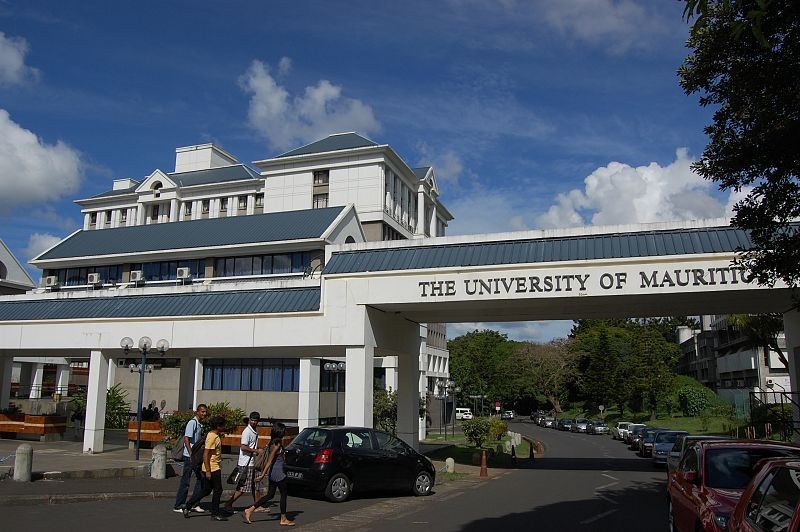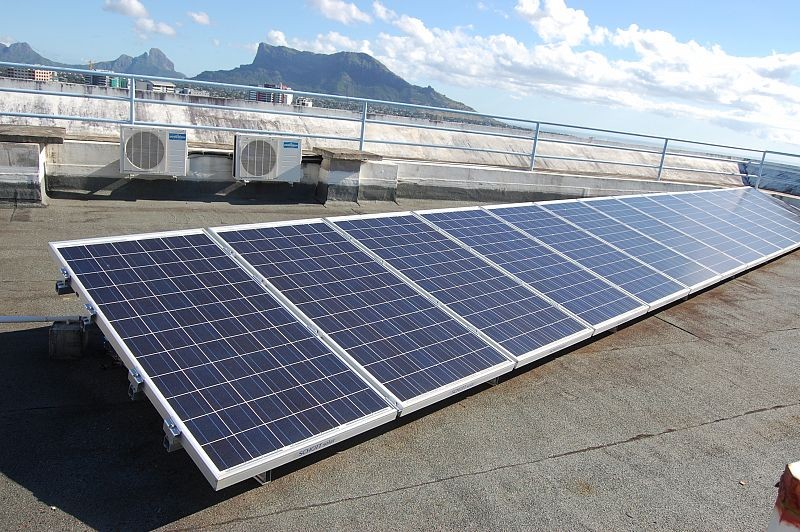To improve energy performance of the campus through efficient appliances, PV system and awareness raising campaigns
 This project was part of an "Eco-Campus Initiative" that was implemented by the University of Mauritius (UoM) to improve its environmental performance. The holistic project approach addressed both the technical and the social/human components. The technologies that were chosen to achieve the objectives included compact fluorescent lamps (CFLs), power factor correctors and photo sensors, as well as a photovoltaic system for the street lighting on campus. The second target, to raise awareness both within the university and the wider community, was achieved through a public information campaign about energy efficiency and the possibilities for changing personal behaviour. The information campaign made use of different means of communication such as brochures, posters, websites and workshops.
This project was part of an "Eco-Campus Initiative" that was implemented by the University of Mauritius (UoM) to improve its environmental performance. The holistic project approach addressed both the technical and the social/human components. The technologies that were chosen to achieve the objectives included compact fluorescent lamps (CFLs), power factor correctors and photo sensors, as well as a photovoltaic system for the street lighting on campus. The second target, to raise awareness both within the university and the wider community, was achieved through a public information campaign about energy efficiency and the possibilities for changing personal behaviour. The information campaign made use of different means of communication such as brochures, posters, websites and workshops.
Technology, Operations and Maintenance
In order to improve the efficiency of the indoor and outdoor lighting, all the existing incandescent bulbs (around 500) were replaced by 14 W CFLs. These new and more efficient lamps use better electrodes and coatings and produce about the same lumen output with substantially lower wattage. By substituting the old bulbs for the new CFLs, energy savings of as much as 60 – 75% are expected. A survey was also carried out to measure the illumination levels of all the rooms on campus and to identify all the light fixtures that would need to be changed in the future. Two power factor correctors were also installed. This technology is a way of reducing electrical load and minimising wasted energy, resulting in improved efficiency and lower electricity bills. The installation of additional power factor correctors, particularly in cases where a number of electricity meters are in operation, would help to achieve electricity and cost savings. Combining metering systems, and using photo sensors, would also provide savings in terms of maximum demand and meter rental fees. In addition, a 2.5 kW solar-powered PV system was installed in February 2011 on the roof of the engineering tower. It consists of fourteen 175W solar modules and produces about 10 kWh daily. An inverter converts DC input voltage into AC voltage to fulfil the requirements of the grid to which the PV system is connected. UoM expects to receive feed-in tariffs for Small Independent Power Producers (SIPP), an initiative that was recently launched by the government. The operation and maintenance of the equipment purchased through this project is the responsibility of UoM technicians in collaboration with the suppliers.Financial Issues and Management
The project is expected to be economically feasible due to the predicted reduction in energy consumption and associated energy costs. The use of CFLs should result in an annual saving of 250,000 Rs (around €5000). These savings will be invested into long-term information campaigns at UoM, such as annual energy-efficiency campaigns to promote energy saving among new students. An internal team from different departments, led by Toolseeram Ramjeawon, Professor in Environmental Engineering, managed the project. At the beginning of the project there was no commitment from UoM's top management team, but now that the Eco- Campus Initiative has proved to be a success the university management is keen to introduce further energy efficiency measures on campus. For that purpose an Energy Audit Team has been formed under the authority of the vice-chancellor.Environmental Issues
 The primary source for generating electrical energy on the island of Mauritius is fossil fuel (about 80%). Therefore, reducing the energy consumption at UoM results in the parallel reduction of primary fossil energy use. With expected annual electricity savings of about 45,000 kWh, CO2 emissions would be reduced by around 45,000 kg/year (by the new installed hardware). In addition, it is expected that the increased awareness among staff and students will lead to a decrease of electrical energy consumption in the university and at household level.
There are some environmental risks arising from the disposal of CFLs due to the mercury they contain and this problem has not yet been solved. It will necessary to establish a programme that manages the disposal of used CFLs.
The primary source for generating electrical energy on the island of Mauritius is fossil fuel (about 80%). Therefore, reducing the energy consumption at UoM results in the parallel reduction of primary fossil energy use. With expected annual electricity savings of about 45,000 kWh, CO2 emissions would be reduced by around 45,000 kg/year (by the new installed hardware). In addition, it is expected that the increased awareness among staff and students will lead to a decrease of electrical energy consumption in the university and at household level.
There are some environmental risks arising from the disposal of CFLs due to the mercury they contain and this problem has not yet been solved. It will necessary to establish a programme that manages the disposal of used CFLs.